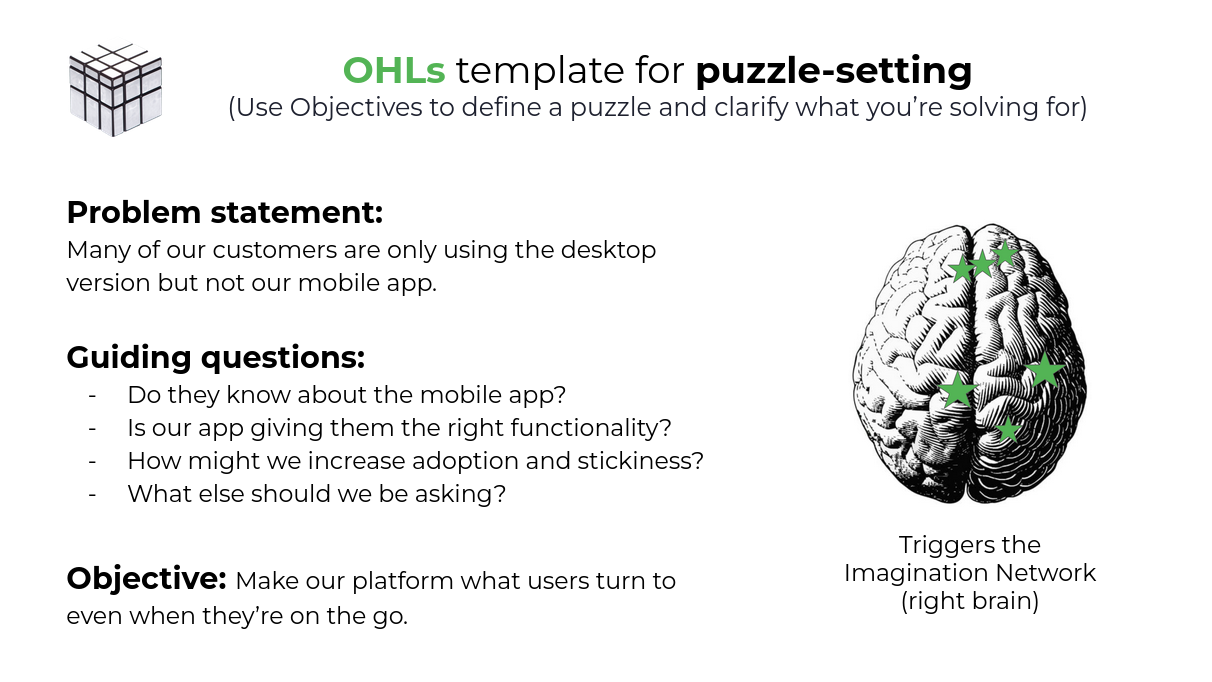Goal-setting and OKRs are like a religion - we take it on faith that they work. My talk at Turing Fest in May was practically blasphemous in that I challenged this fundamental belief with rarely talked about stories of how OKRs have failed even at organizations such as Google and the Gates foundation that have been held up as examples to evangelize OKRs.
OKRs incentivize performance theater
Billionaire VC and author John Doerr who popularized OKRs in his book Measure What Matters, also touted a Google example in his TED talk. He highlighted the OKRs Sundar Pichai wrote for Google Chrome as a great example:
He said, “Pichai set a 3-year objective of building the best browser.” And in terms of Key results, the first year he said ‘Get to 20 million users’, and he got to less than 10 million. The 2nd year he said ‘Get to 50 million users’ and he got to 37 million users. And in the 3rd year he doubled down and said ‘Get to 100 million users’ and kaboom! He got 111 million users.”
Well “kaboom” indeed because in 2016 the European Commission slapped Google with its biggest fine to date (4.125 billion Euros). Google achieved its key result not because it built a great browser, but because it used its market clout for anti competitive behaviour and forced mobile manufacturers to pre-install Google Chrome.
In theory, the OKR methodology is supposed to help teams align around shared goals and motivate teams to drive better results. In practice, it incentivizes performance theater and short-term hacks, leaving entire organizations chasing the wrong outcomes just to “make the numbers look good.” I’ve seen it up close in my work with companies of all sizes, from two-person startups all the way to Fortune 500 firms and even government agencies. The damage is real and ongoing.
OKRs incentivize performance theater
Billionaire VC and author John Doerr who popularized OKRs in his book Measure What Matters, also touted a Google example in his TED talk. He highlighted the OKRs Sundar Pichai wrote for Google Chrome as a great example:
He said, “Pichai set a 3-year objective of building the best browser.” And in terms of Key results, the first year he said ‘Get to 20 million users’, and he got to less than 10 million. The 2nd year he said ‘Get to 50 million users’ and he got to 37 million users. And in the 3rd year he doubled down and said ‘Get to 100 million users’ and kaboom! He got 111 million users.”
Well “kaboom” indeed because in 2016 the European Commission slapped Google with its biggest fine to date (4.125 billion Euros). Google achieved its key result not because it built a great browser, but because it used its market clout for anti competitive behaviour and forced mobile manufacturers to pre-install Google Chrome.
In theory, the OKR methodology is supposed to help teams align around shared goals and motivate teams to drive better results. In practice, it incentivizes performance theater and short-term hacks, leaving entire organizations chasing the wrong outcomes just to “make the numbers look good.” I’ve seen it up close in my work with companies of all sizes, from two-person startups all the way to Fortune 500 firms and even government agencies. The damage is real and ongoing.
Have you experienced these symptoms of goals and OKRs not working?
Here are some of the most common detrimental effects of OKRs that I’ve observed in organizations. Let’s do a check up and see if you’ve observed some of these symptoms:
-
Lies, damn lies, and statistics: When I work with product teams, I’m often asked, “How do we frame these metrics for management?” OKRs create the incentive that we want to demonstrate progress through metrics rather than use metrics to truly question if our approach is working.
-
Limiting innovation: I was talking to a Product manager who told me very proudly that OKRs had given them so much clarity. He told his team, “If it’s not moving an OKR, don’t do it”. OKRs often misdirect teams to focus on just the metrics that management is looking to move (which may be lagging indicators and therefore not the most actionable).
-
Outdated goals: To anyone who says OKRs can misdirect a team, the refrain from OKR experts goes, “This just means you need to set OKRs more often to reflect goals for the quarter”. When an OKR expert suggested this to an executive I heard him scoff, “Yes I know we’re stuck with the OKRs we set in January, but we’d die if we had to negotiate OKRs cross-functionally multiple times in a year!” The process of setting OKRs just takes too long!
-
Borrowing from the future: And finally here’s one last example that I know most of us have seen. In almost every organization I’ve worked in, towards the end of every quarter, sales people could often be seen scrambling to pull in revenues from the next quarter to hit their sales target. Targets lead to a mentality of borrowing from the future to show results rather than solve problems in the present to create a better future. And over my tenure at a company I’d notice that this would work until it didn’t.
If you’re experiencing these symptoms, you’re not alone. And if OKRs aren’t working for you, the problem is not you.
The failure of OKRs was predictable
The problems with OKRs could have been predicted because there are well-established laws of metrics that have existed for half a century:
- Goodhart’s Law (1975): When a measure becomes a target, it ceases to be a good measure.
- Campbell’s Law (1976): The more a given metric is used to evaluate performance, the more likely it is to be gamed and the less reliable it becomes as a measure of success.
These laws tell you what doesn’t work, but they don’t tell you what does. We needed a law to describe how metrics can be used instead. So I’ve risked a place in hell by naming a law after myself:
Dutt’s Law: Metrics are only effective if they’re used towards collaborative learning.
OKRs are like duct-tape on foundational cracks
If you feel like you need OKRs to align your team on the impact you want to create, most likely it’s because your vision and strategy are too broad and therefore useless. The lack of clarity from a fuzzy vision is like having foundational cracks. It’s tempting to patch these foundational cracks with OKRs – they offer the illusion of clarity.
But now that we know that OKRs don’t work, you can fix the foundational cracks rather than patch them with OKRs. You can use the Radical Product Thinking approach to define a clear vision and strategy.
But how do you create accountability and align on measuring success?
OKRs are intended to align the team on which metrics are important and create accountability through the simplicity of the question, “Have you or haven’t you achieved this goal?” But when management teams set OKRs, objectives often feel like they were arbitrarily set from above. Frontline employees then feel stuck in the hamster wheel of showing progress against those objectives while leaders see motion at speed – it creates the illusion of performance accountability and alignment. We need a better alternative, and there finally is one!
Enter OHLs (Objectives Hypotheses and Learnings). OHLs are a better alternative to OKRs and help you build cultures that perform, not ones that perform performance.
In the OHLs approach, instead of setting arbitrary targets, the focus is on setting puzzles for teams. As a leader, you start by defining the problem statement and list a few guiding questions. You then summarize those into an Objective. Together, these elements offer teams clarity on the puzzle you’re setting out to solve. The image below shows an example of an OHL puzzle.

Setting puzzles alone isn’t enough – you also need to develop the puzzle-solving muscle in your team. I find that this capability of experimentation and collaborative learning has often atrophied in goal-driven organizations. To build this puzzle-solving muscle, the OHLs approach helps you structure your hypotheses and learnings using the following three questions:
- How well is it working?
- What did we learn?
- What will we do next?
Below is an image that shows you the template I use with teams to develop muscle memory for asking these three questions and learning to experiment and reflect on learnings so you can use those learnings.

You can download these OHLs templates in a Google Slides or PowerPoint format and start using this approach right away.
By starting with questions rather than certainty, the two OHL templates help turn every team member into a detective seeking solutions to a puzzle. This collective approach to problem solving helps everyone feel ownership in making progress toward the shared objective. It gives everyone an incentive to look objectively at what’s working, what’s not working, and how to course correct.
“The true delight is in the finding out rather than in the knowing.” Isaac Asimov
The #1 question from leaders on adopting an alternative to OKRs
When I talk about why OKRs fail and how to use OHLs instead, I invariably get this question from leaders: “The OKR alternative of puzzle-setting and puzzle-solving sounds great but how can I push the team to achieve the results the board and shareholders expect without goals and targets?”
Using OHLs doesn’t mean you’re leaving the team to graze like carefree sheep on rolling meadows. OHLs are a rigorous approach to measurement and the answers to the three essential questions (i.e. how well is it working, what have we learnt, and what will we try next) give you the visibility you need so you can offer feedback and course correct.
With OKRs on the other hand, you might set targets, but most likely you’ll only find out that there is a problem when those targets are missed. In other words, the visibility you have is from the rear-view mirror – metrics become less actionable.
The #1 question from individual contributors on adopting an alternative to OKRs
If you’re a frontline manager or an individual contributor who has been frustrated by how OKRs derail teams, you might heartily agree that OHLs are a better alternative to OKRs. But most likely you’re wondering, “How do I get the leadership team to see why OHLs are better than OKRs?”
You can use these templates even at a grassroots level to create profound organizational change. In fact, I’ve field-tested this approach of introducing OHLs at an individual contributor level and sparked an organic movement across the organization. Having had this experience first hand, I can tell you that you can do this too.
Read this next article to guide you through how you can bring about this change in your company.
P.S: Share this blog with others in your organization to build momentum for your grassroots movement. You can also download these OHLs templates in a Google Slides or PowerPoint format and start using this approach right away.
